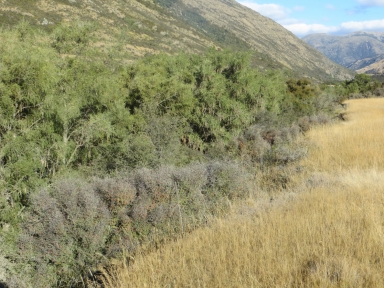Dryland River Terraces, Foothills and Inland Basins

Drylands are areas of naturally low rainfall. They typically are made of shrublands and fescue tussock grasslands. They are precious habitats that cover 19% of New Zealand's land area. Drylands contain about half of New Zealand's most threatened plant species. There is a very high diversity of native herbs, sub-shrubs and grasses.
The animals in drylands are mostly lizards and invertebrates but also important habitats for birds. Drylands have important biodiversity, natural, physical, cultural and recreational values. Drylands might be used for carbon sequestration (carbon capture and storage), as well as soil and water conservation.
Previously drylands were used for pasture but more recently for cropping, viticulture, horticulture, dairying, forestry, and lifestyle blocks. There has been an extensive loss of dryland ecosystems to agricultural development. As a result, drylands are New Zealand’s least protected and most threatened ecosystems.
Source: Biodiversity Consultant Sue McGaw (NZCD Arch. B.Com Hort, Msc. Ecol)
See more detailed plant listing for Drylands
Additional plant species for sheltered gullies.
PLANT NAME (T = threatened, R = rare)

Hours
Open 7 days a week: 10am-4pm